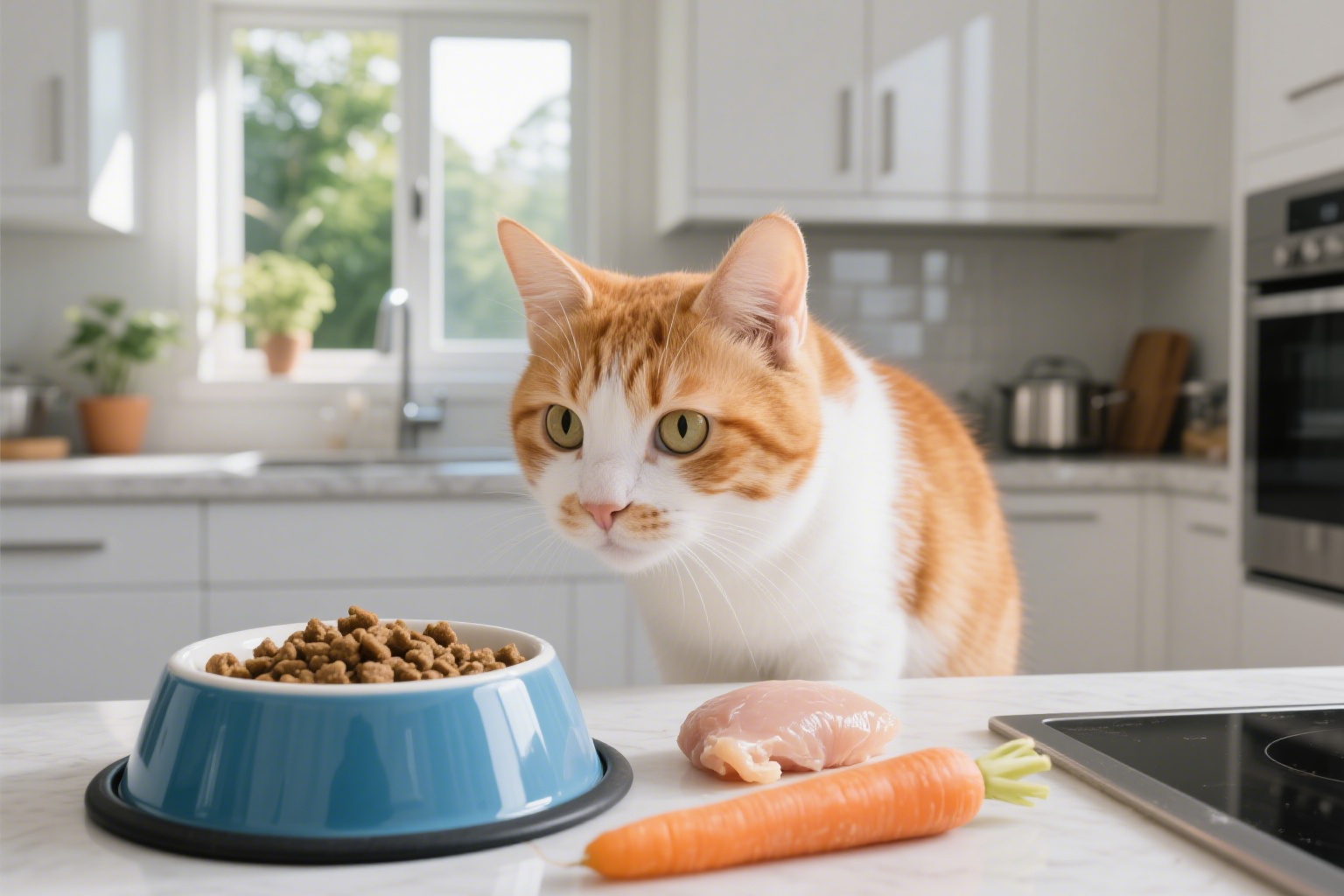You’ve probably seen the term popping up everywhere, from trendy online pet stores to your social media feed: “human-grade” cat food. It sounds impressive, premium, and maybe even a little over-the-top.
But what does “human-grade” actually mean when it comes to your cat’s dinner? Is it just a clever marketing gimmick, or is it a genuinely healthier option that’s worth the significantly higher price tag?
As devoted cat parents living in urban spaces, we want the absolute best for our feline companions. But we also need to be smart with our budget. In this in-depth guide, we’ll break down exactly what human-grade cat food is, separate the facts from the marketing fluff, and help you decide if it’s the right choice for your furry friend at AptPaws.

Table of Contents
What Does “Human-Grade” Actually Mean? The Official Definition
First, let’s get one thing straight: the term “human-grade” is not just a fancy marketing phrase. It’s an official claim regulated by the Association of American Feed Control Officials (AAFCO), the organization that sets standards for pet food in the United States.
For a pet food to be legally labeled as human-grade, it must meet two strict criteria:
- Every single ingredient in the formula must be edible for humans—the same quality you’d find in a grocery store. This means real, USDA-inspected muscle meat (not “4-D” meat from dead, dying, disabled, or diseased animals), fresh vegetables, and quality oils.
- The entire manufacturing process must take place in a facility that is licensed to produce human food. This means the kitchens, equipment, storage, and safety protocols must all adhere to the same stringent FDA standards as the food you eat yourself.
Essentially, “feed-grade” pet food (which is what most traditional kibble and canned foods are) is made with ingredients and in facilities that are not legally suitable for human consumption. Human-grade food, in theory, is safe enough for you to eat (though you probably wouldn’t enjoy the taste!).
The Potential Benefits: Why Do People Choose Human-Grade?
Advocates for human-grade cat food point to several potential benefits, most of which stem from the higher quality and less processed nature of the ingredients.
- Improved Digestibility: Because the ingredients are whole and recognizable (like real shredded chicken instead of “chicken meal”), they are often easier for a cat’s digestive system to break down and absorb. This can sometimes lead to less vomiting, firmer stools, and better nutrient absorption.
- Higher Quality Protein: The protein in human-grade foods typically comes from real muscle and organ meat, which is a more bioavailable source of essential amino acids like taurine compared to the rendered fats and meals found in some feed-grade products.
- Fewer Fillers & Additives: Human-grade recipes tend to avoid common fillers like corn, wheat, and soy, as well as artificial colors, flavors, and controversial preservatives (like BHA/BHT). This can be particularly beneficial for cats with known food sensitivities or allergies.
- Increased Hydration: Many popular human-grade options are fresh or wet foods with high moisture content, which is critically important for cats. Proper hydration supports kidney health and urinary tract function, a major concern for all cat owners.
The Big Question: Is Human-Grade Cat Food Worth the Price?
This is where the decision becomes personal. There’s no denying that human-grade cat food is significantly more expensive than traditional kibble. A month’s supply can cost two to four times as much.
So, is it worth it? Here’s a balanced way to look at it:
It might be worth the price if:
- Your cat has specific health issues: For cats with diagnosed food allergies, sensitive stomachs, or chronic digestive problems, switching to a simpler, less-processed human-grade diet can sometimes make a world of difference.
- You prioritize transparency and ingredient quality above all else: If the idea of “feed-grade” ingredients makes you uncomfortable and you want complete peace of mind, the higher cost is the price for that assurance.
- Your budget comfortably allows for it: If you can afford it without financial strain, it’s a wonderful way to provide a premium, high-quality diet for your pet.
It might NOT be worth the price if:
- Your cat is young, healthy, and thriving on a premium “feed-grade” food: A high-quality traditional food from a reputable brand that meets AAFCO standards is still a perfectly healthy and complete diet. “Human-grade” is an upgrade, not a necessity for every cat.
- It would cause you significant financial stress: Your cat’s well-being also depends on having a happy, stress-free owner. It’s better to feed a consistently good-quality traditional food than to sporadically feed an expensive human-grade food you can’t really afford.
Our Verdict at AptPaws
So, what is human-grade pet food? It’s a promise of quality, transparency, and safety, mirroring the standards of our own food.
While it’s not a magic bullet or a mandatory diet for every cat, human-grade food represents a positive shift in the pet food industry towards better ingredients and more honest practices. For cat parents who can afford it, especially those with cats facing health challenges, it can be a fantastic investment in their long-term health and happiness.
For everyone else, the key takeaway is to become a more educated consumer. Learn how to read a cat food label and choose the absolute best traditional food you can find within your budget. At the end of the day, a well-fed and deeply loved cat is the ultimate goal, regardless of the label on the bag.